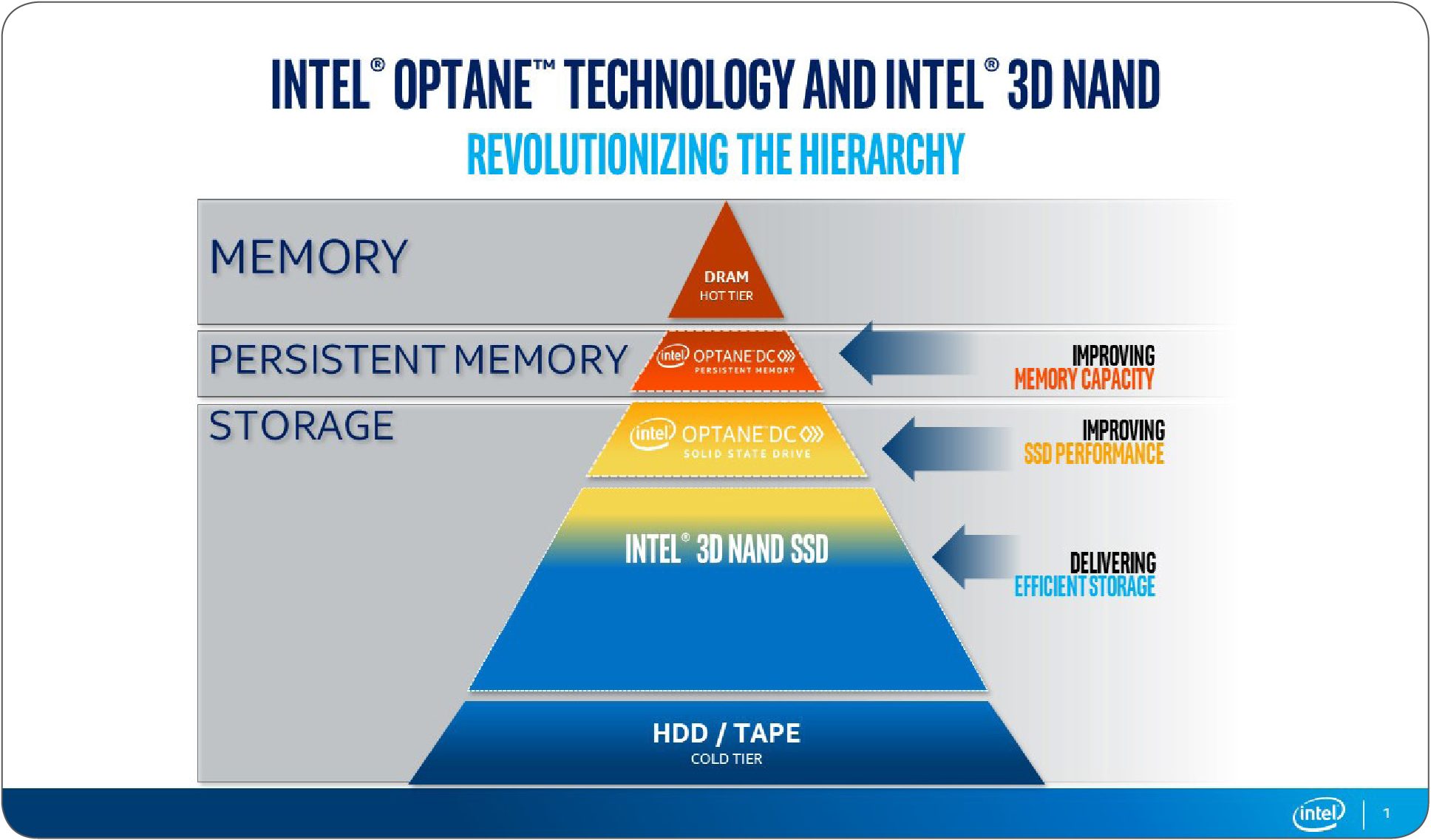Intel Optane DC Persistent Memory for Cisco Servers At-A-Glance
Available Languages
Bias-Free Language
The documentation set for this product strives to use bias-free language. For the purposes of this documentation set, bias-free is defined as language that does not imply discrimination based on age, disability, gender, racial identity, ethnic identity, sexual orientation, socioeconomic status, and intersectionality. Exceptions may be present in the documentation due to language that is hardcoded in the user interfaces of the product software, language used based on RFP documentation, or language that is used by a referenced third-party product. Learn more about how Cisco is using Inclusive Language.
Filling the gap between DRAM and SSDs
Intel® Optane™ DC Persistent Memory is a new technology designed to fill the capacity, cost, and performance gaps between traditional DRAM memory and storage for servers. While the performance of DRAM is great, it is relatively expensive and volatile (the contents disappear when the server is rebooted). SSDs, one option for storing programs and data, while faster than hard disk drives, are not nearly as fast as DIMMs, though their content isn’t volatile. Intel Optane DC Persistent Memory was designed to provide an option between DRAM and SSD, reducing the cost while potentially increasing the size of server memory and/or providing the fastest persistent storage of data. Up to half of the server’s DIMM slots can be used for Intel Optane DC Persistent Memory.
● Increased memory size
● Ultra-fast persistent storage
● Improved TCO for workloads that need large memory
● Improved system performance for workloads with high disk I/O
In Memory mode, lower-cost, higher-capacity Intel Optane DC Persistent Memory modules are paired with DDR4 DIMMs to reduce the cost of a given amount of memory. For example, you now have two options to increase per-socket memory to 3 TB: 12x 256GB DDR4 DIMMs, or the more cost-effective option of 6x DDR4 DIMMs + 6x 512GB Intel Optane DC Persistent Memory modules (the DDR4 DIMMs are “invisible” to the operating system and instead act as a fast cache for the persistent memory modules). You will have to evaluate the price/performance tradeoffs to decide which is the best solution for your applications.
Simple and easy to configure
Only Cisco UCS® servers treat infrastructure as code and allow you to use polices to configure Intel Optane DC Persistent Memory. As with other server hardware features, UCS Manager can be used to define how your Intel Optane DC Persistent Memory will be used – in Memory mode, App Direct mode, or both – and how much capacity should be configured for each. Cisco Intersight™ can be used to configure UCS C-Series rack servers.
This approach enables you to configure hundreds of servers as easily as you can configure one server. This automation reduces the number of manual steps needed, helping reduce the opportunities for human error, improve consistency, and further shorten server and network deployment times.

In App Direct mode, the Intel Optane DC Persistent Memory modules are used as low-latency, high-speed persistent memory for data or storage attached directly to the CPU instead of the PCIe bus. Each CPU can have up to 1.5 TB of DDR4 memory and up to 3 TB of App Direct memory/storage. This allows application developers to customize their code to make the best use of each memory type.
For more information about all Cisco UCS servers, please visit https://www.cisco.com/go/ucs.
For more information about all Cisco HyperFlex™ servers, please visit https://cisco.com/go/hx.